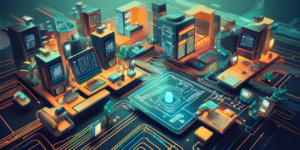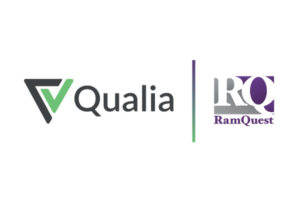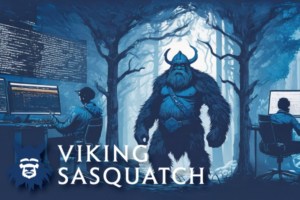The modern workplace of the American worker has changed drastically over the past five years. While it used to be common to “leave the work at work” and return to it the following day, our jobs and tasks have now become more fluid. We want the flexibility to work where it fits best into our life – during soccer practice, on a business trip, or in the comfort of home. As a result, much of the work we’re getting done today happens outside the secured network.
The activity of the modern worker, therefore, is no longer being protected by the firewall in the IT closet at the office. Today, attacks are more sophisticated than ever while the average worker has far less protection to defend them.
Modern hackers often initiate their crimes by gaining access to an existing account. But, if you can discern that the attacker is not who they say they are through identification, the attack fails.
This highlights one of the most important reasons to invest in cybersecurity. You need to validate identities. To do this, businesses big and small use a variety of solutions. These types of cybersecurity solutions can range from Multi-Factor Authentication (MFA) and antivirus software to added safeguards, like email, and endpoint detection and response.
In this article, we’ll discuss the ins and outs of these types of cybersecurity solutions to help you determine what best suits your needs.
#1. Identity Security: First Line of Defense
Anything you can do to secure your digital identity is the first line of defense. The challenge we see most often is that businesses will focus on network security. While this is important, it doesn’t necessarily protect your employees when they are working outside the office.
That’s why identifying security needs to extend to your employees’ general business accounts and devices. This usually starts with their Microsoft 365 account. Microsoft has a set of built in tools to help you with this, like the Microsoft Authenticator app. It provides a quick way of managing multi-factor authentication to confirm your identity.
Tip: If you’re using Microsoft 365, consider enabling Microsoft Defender, which offers protection against phishing and malware.
At Premier One, we remain aware of new threats as technology and hacker opportunities change. This is why we, as a Microsoft Partner, recommend a suite of different types of cybersecurity solutions to deliver full protection.
#2. Antivirus/Antimalware Software: Essential for Device Security
Cyber risks extend beyond unauthorized entry and data leaks. Threats like viruses, ransomware, and spyware can critically damage your IT setup. Cybersecurity risk solutions like antivirus and malware tools offer relentless defense by identifying, detecting, and eliminating these dangers.
However, antivirus software can cover many things. Here are some examples of what they can do:
- AI & Machine Learning Integration: The ability to detect and respond to evolving threats quickly is imperative for a strong security posture. Before AI, the average time to discover a breach was 287 days.
- Mobile Device Security: More employees are using smartphones, tablets, and remote connections to get work done, and that trend is spreading the surface area for risk.
- Cloud-Based Deployment: Your managed service provider can offer scalability, ease of deployment, and real-time updates using a cloud-based antivirus solution.
- Endpoint Security: More connected devices equates to more points of failure. Make sure that your antivirus extends all the way down the line to cover every device, every user, and every access point.
Additionally, routine software updates are very effective in bolstering your defense against newly discovered threats. It’s dangerous to think of software as a set-it-and-forget-it system. This is why companies of all sizes rely on managed IT providers to recommend and maintain different types of cybersecurity solutions.
#3. Multi-Factor Authentication: Safeguards for Critical Data
Multi-Factor Authentication (MFA), sometimes referred to as Two-Factor Authentication (2FA), is the most powerful and important tool available today for identity security. And, in most cases, it’s FREE! However, most businesses either do not enforce MFA or have allowed exceptions for workers who prefer not to use it.
Your Microsoft 365 account includes MFA protection to add an extra layer of security. It requires two forms of identification before accessing the account. For instance, in addition to a password, you would also enter a 6 or 8-digit numeric code from your phone to prove that you are the one logging into the account.
Remember, Microsoft 365 would never ask for your password over email or by phone. Be cautious of any emails or websites asking for your credentials. Even one misclick can mean that your identity is no longer secure.
#4. Email Protection: Added Layer of Protection
A common point of failure is email. Email is an open system, meaning that it accepts almost anything that is sent to it. Most employees have a company email, creating hundreds or thousands of potential access points for sophisticated phishing attacks. These schemes can often appear very legitimate, tricking even knowledgeable employees into falling for the bait.
For example, hackers recently exploited a Salesforce vulnerability to abuse Meta (Facebook) integrations. As a result, they were able to access Facebook user account information to send emails from that user under a Salesforce.com domain. This helped the emails bypass traditional security measures. These emails were then leveraged to trick recipients into entering personal data.
To protect our clients from attacks like these, we partner with Barracuda to provide spam filtering protection that is effective against phishing and DoS attacks sent via email. We also recommend filtering harmful and explicit content on your network, as well as limiting the use of social media.
#5. Endpoint Detection & Response: Device Defense
One final type of cybersecurity solution is an Endpoint Detection & Response, which provides a set of security features to shield user devices. This tool goes a step further than conventional antivirus tools with endpoint protection by integrating preventative, detective, and corrective measures.
Without an Endpoint Detection & Response system in place, an employee can unsuspectingly open an email with a suspicious attachment that quickly encrypts your network data and holds it hostage – bringing your entire organization to a halt.
With this system in place, the attachment would be identified as malicious by the software before it was even opened. The file would then be quarantined, and the IT team or provider would be notified of the threat, all without requiring action from your employee.
Take a moment to consider how many employees access your network at any given time. All a breach requires is one human error. Endpoint Detection & Response platforms can provide a protective addition to your different types of cybersecurity solutions.
The Takeaway: Cybersecurity Risk Solutions Work Best in Layers
Cybersecurity defense isn’t just one thing. It’s a lot of layers that come together to offer an encompassing level of protection. At Premier One, we know that the best approach to cybersecurity is a combination of different types of cybersecurity solutions tailored to the specific needs of your organization.
Keep in mind that cybersecurity is not a one-time effort but rather a continual process that requires monitoring, upgrading hardware, and updating software.
Premier One is a trusted partner who can help you protect your most valuable data. We are (SOC) 2 Type II certified, which means that our policies and procedures conform to appropriate governance standards.
Strengthen your security posture today with Premier One! As a leading IT services provider, we’ll deliver an effective cybersecurity risk solution tailored to fit your needs. Get in touch with our team today!



